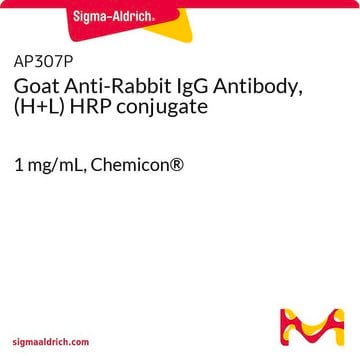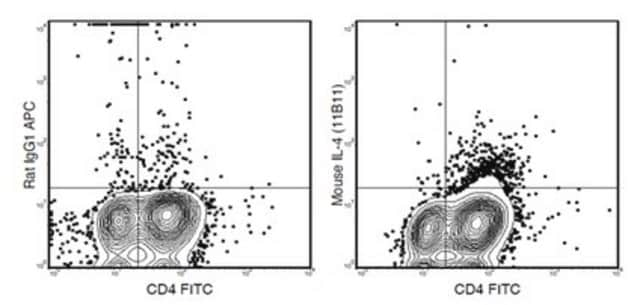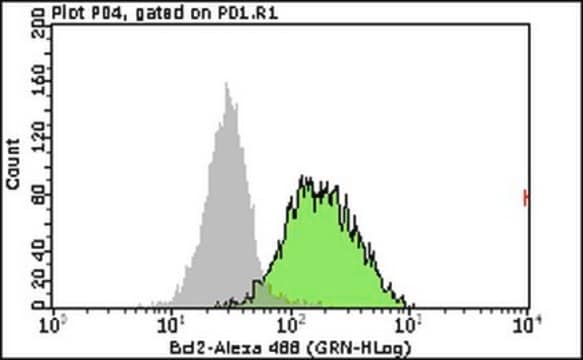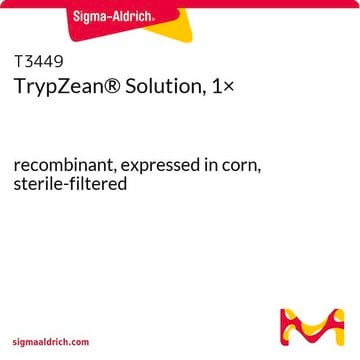MABF1033
Anti-CCRL2 (Mouse) Antibody, clone BZ2E3
clone BZ2E3, from rat
Sinónimos:
C-C chemokine receptor-like 2, Chemokine receptor CCR11, G-protein coupled beta chemokine receptor, L-CCR, Lipopolysaccharide-inducible C-C chemokine receptor
About This Item
Productos recomendados
origen biológico
rat
Nivel de calidad
forma del anticuerpo
purified antibody
tipo de anticuerpo
primary antibodies
clon
BZ2E3, monoclonal
reactividad de especies
mouse
no debe reaccionar con
human
técnicas
flow cytometry: suitable
isotipo
IgG2aκ
Nº de acceso NCBI
Nº de acceso UniProt
Condiciones de envío
ambient
modificación del objetivo postraduccional
unmodified
Información sobre el gen
mouse ... Ccrl2(54199)
Descripción general
Especificidad
Inmunógeno
Aplicación
Flow Cytometry Analysis: A representative lot immunostained liver and lung CD31+/CD146+ endothelial cells from wild-type, but not Ccrl2-/- mice. Intraperitoneal LPS injection prior to cells isolation upregulated surface CCRL2 staining on liver and lung CD31+/CD146+ endothelial cells (Monnier, J., et al. (2012). J. Immunol. 189(2):956-967).
Flow Cytometry Analysis: A representative lot detected cytokines-induced CCRL2 expression on the surface of bEND.3 mouse endothelioma cells. IKKbeta inhibitor BAY (11 7082) and/or JAK-1 inhibitor (sc-204021) inhibited cytokines-induced CCRL2 expression (Monnier, J., et al. (2012). J. Immunol. 189(2):956-967).
Flow Cytometry Analysis: A representative lot immunostained L1.2 mouse pre-B lymphoma cells expressing transfected mCCRL2, but not untransfected L1.2 or L1.2 transfectants expressing mCMKLR1, huCMKLR1, mCRTH2, huCCRL2, or mCCR10, nor non-CCRL2-expressing mouse blood cells. Chemerin, but not CCL2, blocked clone BZ2E3 staining of CCRL2-positive mouse peritoneal exudate cells (Zabel, B.A., et al. (2008). J. Exp. Med. 205(10):2207-2220).
Inflammation & Immunology
Calidad
Isotyping Analysis: The identity of this monoclonal antibody is confirmed by isotyping test to be rat IgG2a .
Descripción de destino
Forma física
Almacenamiento y estabilidad
Otras notas
Cláusula de descargo de responsabilidad
¿No encuentra el producto adecuado?
Pruebe nuestro Herramienta de selección de productos.
Código de clase de almacenamiento
12 - Non Combustible Liquids
Clase de riesgo para el agua (WGK)
WGK 1
Punto de inflamabilidad (°F)
Not applicable
Punto de inflamabilidad (°C)
Not applicable
Certificados de análisis (COA)
Busque Certificados de análisis (COA) introduciendo el número de lote del producto. Los números de lote se encuentran en la etiqueta del producto después de las palabras «Lot» o «Batch»
¿Ya tiene este producto?
Encuentre la documentación para los productos que ha comprado recientemente en la Biblioteca de documentos.
Active Filters
Nuestro equipo de científicos tiene experiencia en todas las áreas de investigación: Ciencias de la vida, Ciencia de los materiales, Síntesis química, Cromatografía, Analítica y muchas otras.
Póngase en contacto con el Servicio técnico








